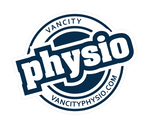Pain in your face or jaw can be excruciating, and it’s even worse when you you’re not sure what’s causing it. For many, facial pain can be related to the temporomandibular joint (TMJ). It’s the hinge-like joint that connects your upper and lower jaw bones; however, not only does it hinge, but slides out, which if not in synch, can cause dysfunction and pain. Anytime this joint isn’t working properly, it could mean you’re having symptoms of TMJ. This complex joint is a series of muscles, ligaments, discs, and bones that move your jaw forward, backward, and side to side. When anything goes wrong in your jaw joint, you can experience pain and trouble moving your jaw. To understand TMJ and what treatment you’ll need, it helps to know what symptoms to look for. Symptoms of TMJ If you’re experiencing any of the following, you may be dealing with a TMJ dysfunction: Pain or tenderness in your jaw joint Pain in your neck or shoulders Tired feeling or pain in your face Swelling on the side of your face Pain in or around your ear Pain while chewing or an uncomfortable bite Toothaches Headaches Dizziness Hearing problems or ringing in the ears (tinnitus) Locked jaw, which makes it difficult to open or close your mouth
Risk factors and causes
While it’s usually easy to recognize the symptoms of temporomandibular joint and nerve pain, it’s more difficult to determine what’s causing your pain. Your doctor or dentist may not be able to tell you what’s causing your TMJ pain. However, a TMJ dysfunction can occur under the following situations:
Arthritis damage in joint cartilage
Disc erosion in the jaw
A jaw injury like whiplash or a heavy blow
Grinding or clenching teeth (chronic)
Stress/Anxiety causes you to tighten facial and jaw muscles
Poor posture
Orthodontic braces
Excessive use of chewing gum
Connective tissue diseases that affect your temporomandibular joint
Diagnosing temporomandibular joint disorder
One of the first people to notice or diagnose a TMJ disorder is usually your Dentist. However, your family physician, an ear, nose, and throat (ENT) specialist, or an oral surgeon can as well. Typically, your doctor will check your jaw joints for pain and tenderness. They’ll also listen for any clicking or grating sounds when you move your jaw and check your jaw’s movement and facial muscles. X-rays or further testing like a CAT scan or MRI can also help your doctor rule out other issues and give a full picture of what’s happening in your face.
Treatment options for TMJ
TMJ has many treatment options. Your first line of care can start at home.
At-home treatment
As you know and practice self-care for your temporomandibular jaw disorder, you may find relief and healing. You can do the following at home:
Eat soft foods. Load up on non-chewy foods and avoid foods that require wide bites like thick sandwiches.
Take an over-the-counter anti-inflammatory medication like ibuprofen or naproxen.
Practice good posture and avoid resting your chin on your hand.
Avoid extreme or unnecessary jaw movements. Skip the chewing gum, place a hand under your chin when you yawn, and avoid things like singing or yelling that might cause you to open your jaw too wide.
Position your jaw with your teeth slightly apart as often as possible. Place your tongue between your teeth if you have problems with grinding or clenching your teeth.
Place moist heat or cold packs on your jaw and the side of your face for about 10 minutes. You can do this several times a day.
Breathing: You’ll need a few stress management techniques in your arsenal to help you relax and loosen your jaw. Consider asking your doctor or dentist about how physical therapy can help.
Massage your neck and jaw muscles. Where appropriate, ask your doctor or physical therapist about gentle stretches you can do at home.
Medical treatment
See your physiotherapist/doctor if the pain and tenderness in your jaw is persistent, or if you can’t open and close your mouth. Recommendations may be made for following types of treatment:
Physical (Physio) Therapy. A physical therapist can give you stretches and massage techniques to help strengthen and stretch your jaw. They can also do ultrasounds and an evaluation of behaviors that might be making your TMJ worse.
Oral splints or mouth guards. These oral devices can be soft or hard and usually slip over your teeth to help keep your jaw in place.
Medications such as pain relievers, muscle relaxers, or anti-inflammatory drugs.
Surgical options. When other treatment options can’t relieve your pain, your doctor may suggest surgery or other procedures. Some of these might include open joint surgery, arthrocentesis, injections at the joint, TMJ arthroscopy, or modified condylotomy. These procedures range from non-invasive to traditional surgery.
Anytime you have aching pain in your face, temple, ear, or jaw, you may be dealing with TMJ. As you understand your symptoms, take care of yourself at home, and counsel with your doctor, you can find relief. Make an appointment us at VanCity Physio to learn more about TMJ and what you can do to relieve your symptoms!
Book a consultation today: https://vancityphysio.janeapp.com/
Follow us on Instagram for more information: VanCity Physio (@vancityphysiotherapy)


